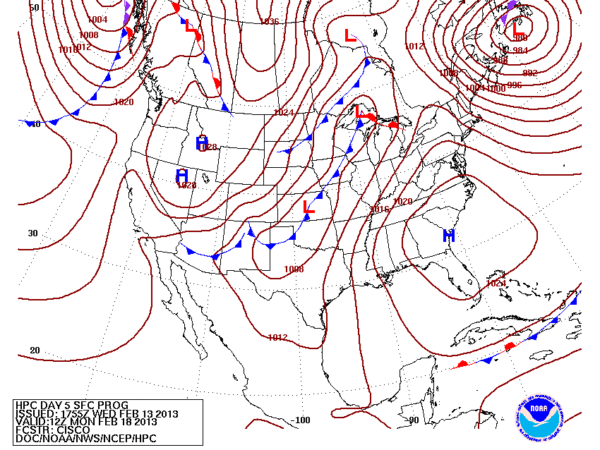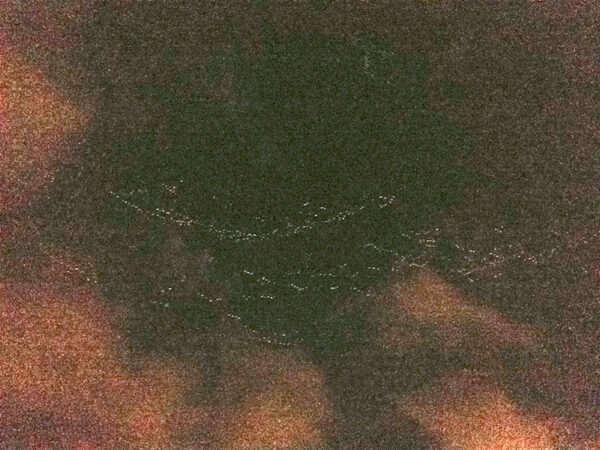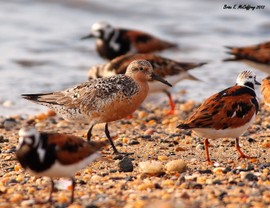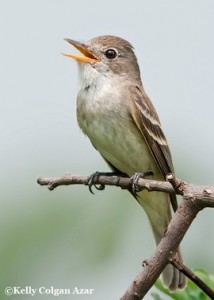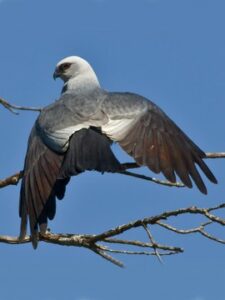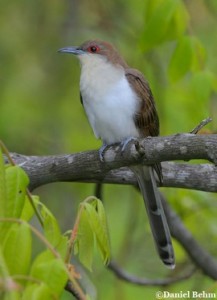News: Uncategorized
Two interesting patterns may spice up the mid-February birding scene next week. High pressure building into the Southeastern US should bring a period of warmer, southerly flow to many areas of the Gulf Coast by Monday. These conditions may facilitate some typically early migrant songbirds and waterfowl to move on Monday night. Radar reflectivity values […] Read more...
January in the temperate Northern Hemisphere is not typically a time that most consider as falling within “spring migration.” Rather, local and facultative movements of wintering birds and irruptive movements tend to dominate birding discussions, observations, and field trips. However, here we are on 1 February talking about the arrivals of the earliest migrants in the […] Read more...
The National Operational Hydrologic Remote Sensing Center produces national snow analysis graphics. As of 28 December, as seen in the graphic below, approximately 64% of the United States is covered in snow! This is a dramatic change from the previous week, when 20% less of the country was covered in snow. Such extensive cover may translate into […] Read more...
“Hindcasting” is something of great interest to team BirdCast, particularly as a means of improving (eventually) our modeling and thinking about where, when, and how birds appear when and where they do. In this case, let’s look at what happened in the southern Great Plains on Sunday night and Monday morning, 11 and 12 November, […] Read more...
The coming week will have an interesting array of weather complemented by an interesting array of birds. The forecast will change many times, presumably, so please check for regular updates to this portion of the forecast page. Light winds may continue to facilitate locally moderate to heavy movements of birds, despite easterly flow and the […] Read more...
Southerly winds and precipitation end this week and begin the weekend, with little or no migration occurring across the metropolitan areas. By Saturday night 20 October, winds shift to the west and a pulse of moderate to heavy nocturnal migration will follow. With this shift to the west, so begins several days of westerly to […] Read more...
High pressure over the eastern Great Lakes creates favorable conditions for moderate to heavy movements on Friday night. Clear skies and cooler temperatures should bring another large wave of later fall migrants, including a diversity of sparrows, kinglets, increasing numbers of Hermit Thrushes, and the last waves of Neotropical migrant warblers. As the high tracks […] Read more...
Low pressure North and then East of the Great Lakes spawns moderate to heavy movements across the area on Friday 5 October and Saturday 6 October. Those in quieter areas should hear Gray-cheeked and Swainson’s Thrushes dominating the acoustic scene, with the first more substantial numbers of Hermit Thrushes, as well as Yellow-rumped and Palm […] Read more...
The coming week will see rapid changes as several systems alternately shut down and spawn substantial passages of birds through the region. These movements, when they occur, should include the first substantial, primarily sparrow movements, including White-throated, White-crowned, Savannah, and Chipping Sparrows, as warbler numbers diminish. Rain shuts down migration to end the week, but […] Read more...
Southerly winds will make for pleasant but perhaps uneventful birding through Saturday, but rain arrives by Saturday night. No new major movements of birds will occur in the area until Sunday night. Migrants that arrived in the heavy movement of Wednesday night and Thursday morning will stay mostly where they are until the next frontal […] Read more...
Winds shifted to the Northwest earlier today (Wednesday 19 September), bringing clearing skies, cooler temperatures, and anticipation of an excellent opportunity for seeing migrants in the greater New York and Philadelphia metropolitan areas! Broad-winged Hawks, Sharp-shinned Hawks, American Kestrels, and even the occasional Bald Eagle are already passing through our area, and hawk movements will […] Read more...
Continued warm, southerly winds do not bring many new birds to the region on Friday and Saturday. However, a passing cold front brings a wind shift on Saturday, and as northwesterly winds blow through the night and into early Monday morning, migrants will respond. Heavy migration will occur Saturday night, with some continued flight of […] Read more...
Migration was generally light across much of the great New York City metropolitan area on the night of 11-12 September. High pressure off the Atlantic coast brought warmer evening conditions than either of the previous two nights, as well as calm and even light southerly winds; after such favorable conditions during previous nights, migration was […] Read more...
Heavy nocturnal migration on the night of 10 September will produce another nice day for birding in the greater New York City metropolitan area. Following Monday’s hawk flight in Manhattan, featuring hundreds of Broad-winged Hawks, Tuesday will see a continuation of the small streams of Broad-winged Hawks, Ospreys, American Kestrels, and Sharp-shinned Hawks passing over […] Read more...
Southwesterly winds, warm temperatures, and scattered rain will keep most birds on the ground for the end of the week through Sunday. However, a substantial change in weather is forecast late on Sunday, and there is a good chance that a passing cold front, followed by cooler temperatures and northwesterly winds, will facilitate a large […] Read more...
Southerly and southwesterly winds and rain will keep most birds grounded through Wednesday. However, a wind shift to the Northwest and clearing skies on Wednesday evening should open floodgates for migration – expect moderate to heavy movements across the area. If this wind shift occurs before sunset, Wednesday night would be an excellent opportunity to […] Read more...
This forecast period (view last week’s forecast) saw what were likely the last major movements of this spring’s migration, though some birds will continue migrating through the 1st and 2nd weeks of June. The West experienced several nights of light to moderate movements, particularly along the Pacific coast. Storms and a frontal passage in the […] Read more...
Most of the last big pushes of spring migration will occur this week. Light to moderate movements will occur in many precipitation-free areas of the West. The Great Plains will experience moderate to heavy movements in many areas early in the period, but a substantial low pressure system will shut down migrants with rain later […] Read more...
Migration across much of the West was largely light in marginal winds aloft and scattered precipitation, although some coastal and desert areas experienced locally heavier movements. Despite a significant frontal passage that shut down movements in its wake, many areas of the Great Plains saw moderate to heavy movements. Similarly, the Upper Midwest and Northeast […] Read more...
Diversity and abundance of migrants remained high across much of the US during this forecast period. (See last week’s forecast.) Presumably, this period and the next will be the last to have such diversity and abundance during this spring season, as many migrants have arrived or will soon arrive at their breeding destinations. Moderate to […] Read more...

